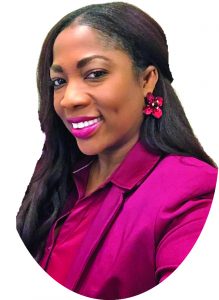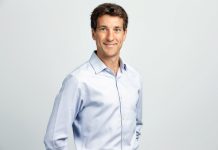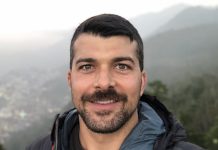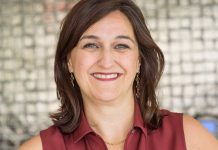What’s a typical day like for you at PSG?
I’m a product manager for Pure Safety Group, managing hard goods and metal goods categories, which include self-retracting lifelines, horizontal lifelines, ladders, anchors, and guardrails.
I’m like a mini-CEO for these categories. I make sure that these areas of the business are running smoothly and are profitable.
To be honest, there really isn’t a typical day. It’s varied. Some days I may be sitting in a meeting all day, other days I may be out with customers. I may be looking at a design or talking with compliance. I’m running steady and fast the entire time, but that’s one of the things that I like about this job. It keeps me on my toes.
What types of safety products do you offer the wind industry?
Pure Safety Group is made up of three different brands.
We have the Guardian Fall Protection brand, which is a brand that’s really well-known in general industry and construction, but we also service other industries. Guardian was originally founded just outside of Seattle in Kent, Washington. The brand is very well-known for its anchorage products and self-retracting lifelines, which are used throughout several industries.
The second brand that’s under the Pure Safety Group header is actually a company that’s based in the U.K. — Checkmate Lifting & Safety.
It originally started out as a company that did lifting, rigging equipment, gear, and things of that nature. The head of this business for Pure Safety Group grew up in the business. His father started the company, and so he knows fall protection in and out. If you think about it, if you’ve been around fall protection since you were 5 or 6 years old, how well does this man know the products, so he can solve any fall protection problem?
His name is Oliver Austin and, if you’re familiar with our industry, you’ll know Oliver’s name. He’s done committee work. He’s very into design. I would say that Checkmate is the innovation powerhouse of the business.
The Checkmate brand of PSG is responsible for a lot of proprietary products and patents — very high-tech products — using advanced materials, and it’s looking at bringing in new technologies and solving really big nuances of the business, while making products inherently safe. That’s the branch of the business that really gives us the new and exciting products.
The third brand that we have under our business is Stronghold. The Stronghold brand is a dropped-object prevention company. They also make products for the nuclear industry. And they are one of the best at it. There are other companies and competitors of that nature that have a similar product offering, but Stronghold was the original innovator and creator, and it still continues to innovate dropped object prevention; they’re continually developing the newest and the latest, and they’re really thinking about: How do we make people who are working at height even safer?
That being said about all of the three brands, the products that we have to offer for the wind and safety industry are positioning lanyards and the most comfortable climbing and tower harnesses, as well as products for rescue and descent. I think about the wind industry in three different areas: assembly, maintenance, and rescue.
If you think about assembly, you may have somebody who’s putting a tower up or working around assembling a wind turbine.
They need to be in fall protection all day. If you’re in fall protection all day, it’s critical to you that you’re able to move around and perform your job. The equipment you’re wearing and using needs to be comfortable, and it needs to be lightweight. If you look at products from Checkmate, a lot of innovative harnesses — like the latest harness from Checkmate, the Xplorer Harness — are designed to be extremely lightweight. The way the harness is made actually contours to the curves of your body.
If you’re up working on a turbine or a tower, there’s actually a sub-pelvic assembly in the harness that makes it extremely comfortable so you can work in an almost semi-seated position.
The connection on that harness is actually a ring connection, so if you think about climbing, moving up and down, or even just range of motion, it fully allows your hip and your leg to move with a full range of motion so you don’t get that restricted feeling you may get in a standard harness.
I think people who are actually wearing that equipment and using it day in, day out, all day, those are the things that really matter to them, because if you have to be in something all day, it needs to be something that’s not distracting you from doing your job. You don’t want to be like, oh, I have a cramp in my leg. You just want to be able to get the job done.
With positioning lanyards, the No. 1 issue with the wind industry is the weight, because it’s on your person, or you’re tied off to it.
Things like offering aluminum connectors, which use innovative material that’s safe and compliant. PSG products are OSHA compliant, ANSI compliant, CSA compliant, and EN compliant, so the nice thing about Pure Safety Group and our products is that, because we have companies in various locations across the globe and fall protection is all that we do, we know what’s required everywhere for fall protection. We’re not manufacturing gloves or safety glasses or gas detectors. It’s just fall protection.
We’re really experts in the products that we design, and, on top of that, have full compliance covered in a range of different countries.
On the rescue side of things, I would definitely highlight another Checkmate product, which would be our MAX Descender.
When a turbine is being assembled, God forbid you need to rescue somebody. And with the wind industry, height is going to be one of the major factors you need to be concerned with, as well as speed.
If you have someone who has fallen, or they’re in a position that they need to be rescued, they’re incapacitated. You want to get to that person as quickly as possible. If they’re 300 feet up in the air, you really want to get to them fast, and you want to be able to get them safely down to the ground quickly.
Looking at the MAX Descender, one of the nicer components about this unit is it does have a stainless steel and aluminum construction, so it’s a lightweight product for the industry, but also can be used with a drill or as a wheel, which allows you to ascend or descend at a faster pace to get that person to safety. You can use it upright, or you can also use it in an inverted mode if needed.
Also, weight requirements need to be considered. When you’re rescuing somebody, you may have at least two people, maybe more, on this one line. You want to make sure that you’re able to get them down safely, so our product can handle up to 660 pounds. And it comes in custom lengths.
What other methods does PSG use to keep wind technicians safer?
We have a full training program we offer in-house. We do training through our HART training program and offer classes. You can come into our facilities either in the U.K., which is about an hour or so outside of London, or you can come to Kent, Washington, which is just 30 minutes outside of Seattle, or to Pasadena, Texas, near Houston.
We also do online training, and we do training where we will come into your facility. We have a list of training courses that are already preset, but we also do customized training through the HART program.
It’s a full offering, and it’s kind of nice if you think about it for the wind industry. In your industry, because at-height technicians need training on those specific products because they are a bit more complex than your standard fall protection. They’re a lot more involved.
How has the COVID-19 pandemic affected how PSG works with the wind industry, or has it?
It’s definitely had an effect. It’s not just with wind. It’s affected how we work with everyone. A lot of the training has moved to online vs. in-person and, even when we’re doing in-person training, the class sizes are different, or we need to make sure we’re in an outdoor environment.
We’ve also had a lot of recent requests and questions as far as just cleaning the products: How do I clean my harness? What chemicals are allowed? How is it that I need to be cleaning my lanyards? We’ve had a lot of requests from customers who are actually looking at replacing their equipment just due to COVID. It’s been a time I think about where the focus in the global economy has really been on keeping people safe, putting the focus back on families, and the person, and if you think about your colleagues irrespective of the industry, they truly are your family.
With wind specifically, it’s an industry where safety is the utmost concern, and we have a lot of well-versed people on the products who are professionals. I’ve also seen a lot of companies investing in their workers more during this time, and I think Pure Safety Group has done a good job of pairing our people with our customers, looking at their existing equipment, and making recommendations on how they can continue to keep their workers safe during COVID — making sure they have each worker outfitted with the tools they need.
So, when they do get back on the job full-time, everybody is fully trained and ready to go. There’s been a large focus on training during this time.
More info www.puresafetygroup.com































